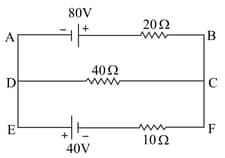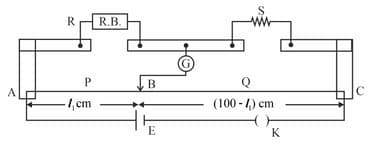Embibe Experts Solutions for Chapter: Current Electricity, Exercise 1: cbse-2018
Embibe Experts Physics Solutions for Exercise - Embibe Experts Solutions for Chapter: Current Electricity, Exercise 1: cbse-2018
Attempt the free practice questions on Chapter 3: Current Electricity, Exercise 1: cbse-2018 with hints and solutions to strengthen your understanding. EMBIBE CHAPTER WISE PREVIOUS YEAR PAPERS FOR PHYSICS solutions are prepared by Experienced Embibe Experts.
Questions from Embibe Experts Solutions for Chapter: Current Electricity, Exercise 1: cbse-2018 with Hints & Solutions
Define the term ‘conductivity’ of a metallic wire. Write its SI unit.
Using the concept of free electrons in a conductor, derive the expression for the conductivity of a wire in terms of number density and relaxation time. Hence, obtain the relation between current density and the applied electric field .
Using Kirchhoffs rules, calculate the current through the and resistors in the following circuit

What is end error in a metre bridge? How is it overcome? The resistances in the two arms of the metre bridge are and respectively.
When the resistance is shunted with an equal resistance, the new balance length found to be , where is the initial balancing length. Calculate the value of .

A potentiometer can measure emf of a cell because :
Two resistors and of and are connected in parallel across a battery. The ratio of power dissipated in them, P1 : P2 will be
Explain the principle of working of a meter bridge. Draw the circuit diagram for determination of an unknown resistance using it.
In case two cells are identical, each of emf and internal resistance , calculate the voltage across the external resistance
